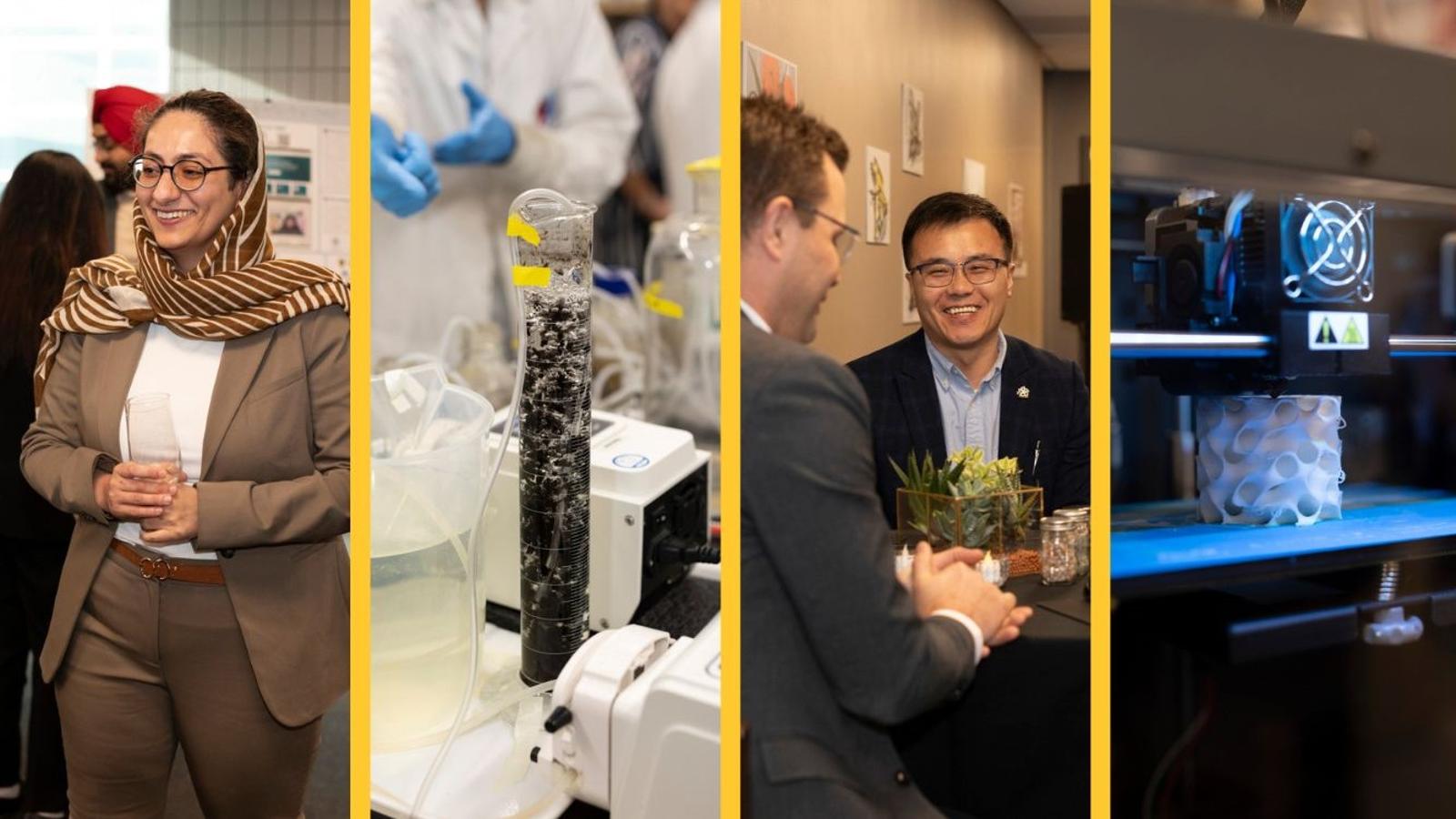
Chancellor's Community reveals the power of education to transform and innovate
What do you get when you combine brilliant minds, tough challenges, and great networking? The Chancellor’s Community at the University of Regina!
Community combined with innovation and the power of the academic journey to transform lives and impact society were at the heart of the celebratory atmosphere during the Chancellor’s Community dinner and engineering research showcase on April 17.
Community connection
“When I started the Chancellor’s Community last year, my goal was to bring community to campus and campus to community,” said Pam Klein, Chancellor of the U of R. “Through events such as tonight’s dinner and research showcase, we are doing just that and demonstrating how our University and students are meeting the needs of local community and broader society.”
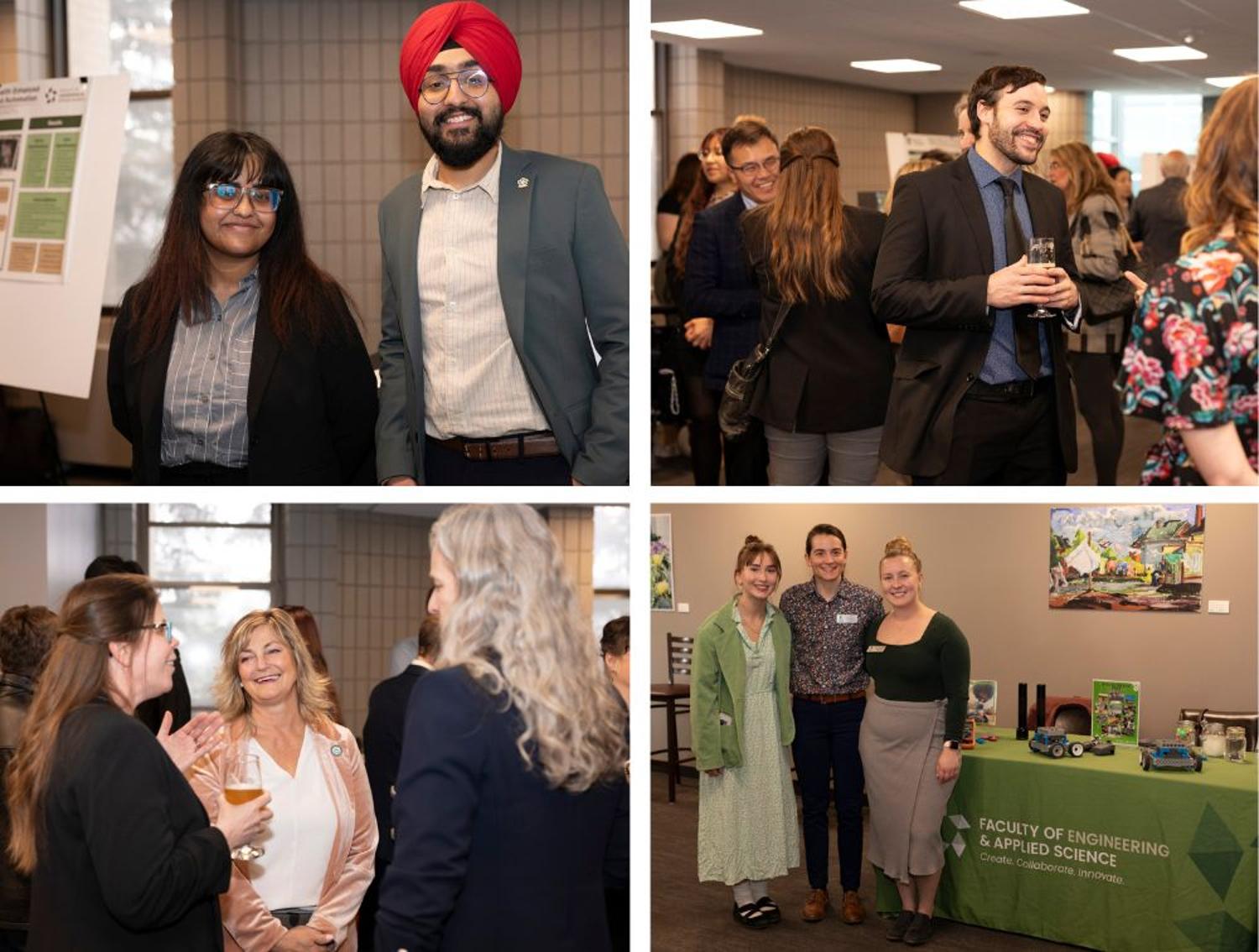
A dream come true
The Chancellor’s Community was established by Klein to create a philanthropic network of leaders from business, academia, and the community who are dedicated to transforming the lives of talented U of R students through education – empowering the next generation of leaders.
“The Chancellor’s Community will make an incredible difference in the lives of well-deserving students during their academic journeys at the U of R,” said Klein. “Over the past several weeks, President Keshen and I have had the privilege of touring high schools to present - for the first time - 14 full-ride undergraduate student scholarships to exceptional students who are pursuing their academic dreams.”
Klein introduced several of the new Chancellor’s Community scholars to the Community at the April 17 event.
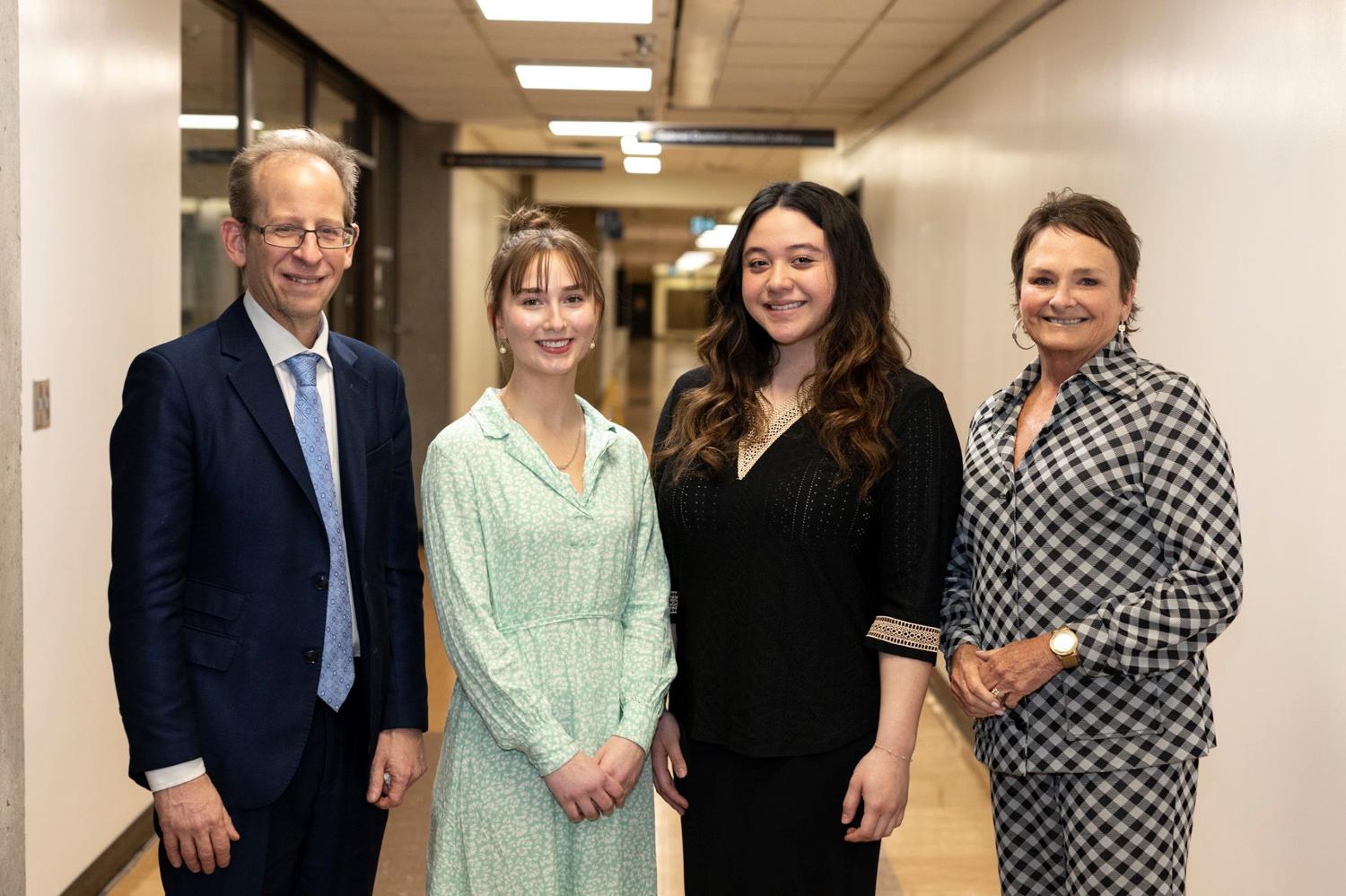
“I am incredibly grateful for the Chancellor’s Scholarship, because it means I won’t have to try to balance working almost full time while also taking a full course load,” said Anneka McLaren, who is from École Thom Collegiate High School and pursuing a Bachelor of Science in Biochemistry through Campion College this fall. “When I heard that I received this scholarship, it felt like a huge recognition for all of the hard work I have put into my studies and community in the past few years.”
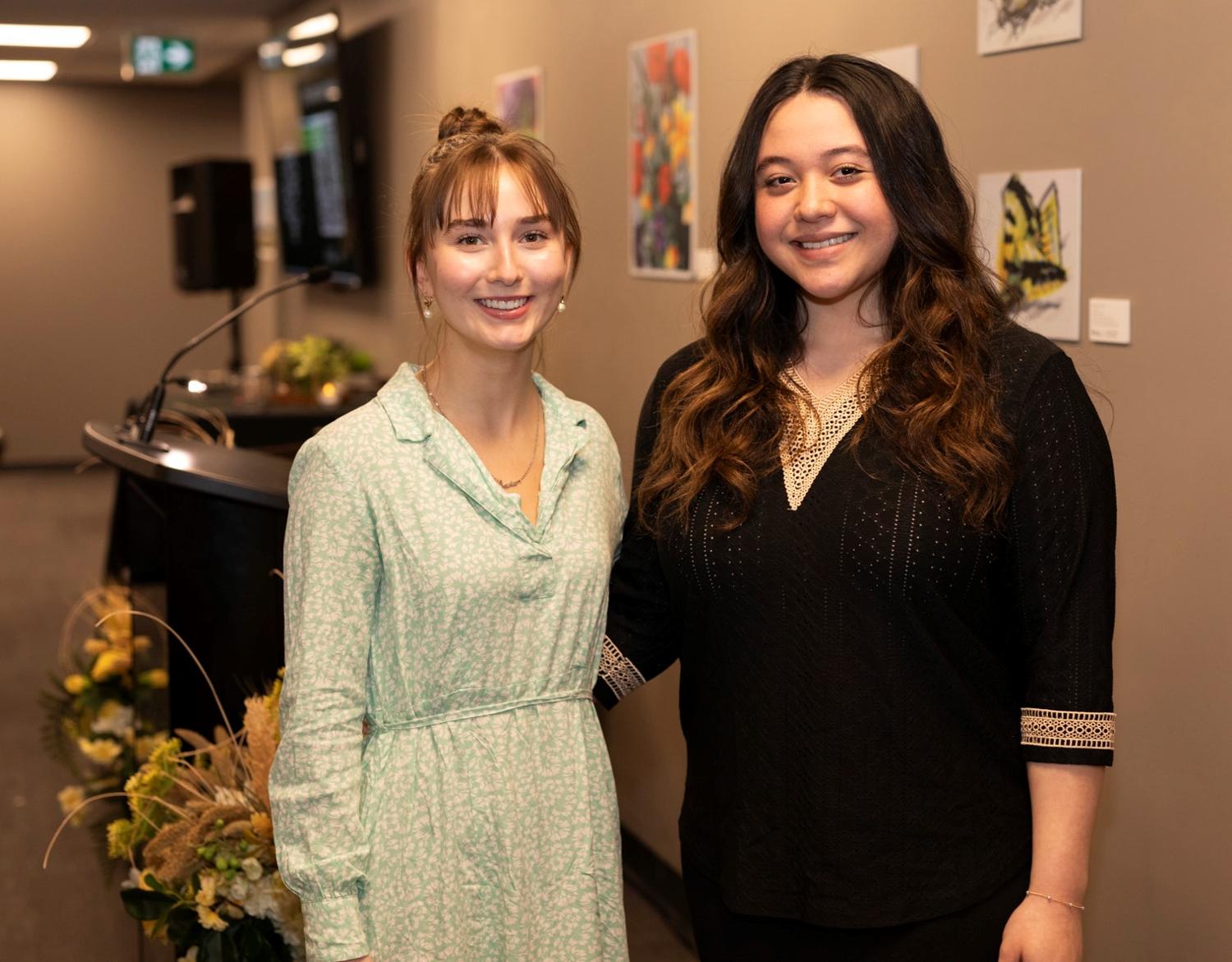
Lanea Lafontaine, who is graduating from Flex Ed Online School, also received a Chancellor’s Scholarship and will be entering the Faculty of Nursing at the U of R this fall. She aspires to pursue higher education in the health field after becoming a registered nurse.
“My first reaction when I found out that I was a recipient of the Chancellor’s Scholarship was disbelief,” said Lafontaine. “I have been so busy with high school, extracurricular activities, and my volunteer duties, that this was an incredible surprise that completely caught me off guard. I’m so grateful to the Chancellor’s Community for this prestigious award, and for being a recipient of this scholarship.”
Undergraduate and graduate students alike welcomed the two new scholars and provided attendees with engaging demonstrations of their research projects on display and in the labs.
Transform the lives of talented U of R students with your donation today. Learn more.
Power of education to transform and innovate
Members of the Chancellor’s Community, guests, students, and faculty from the U of R gathered to hear about groundbreaking research and witness firsthand innovations driving advancements in water safety and security, 3D print manufacturing, geothermal energy production, wheelchair automation, and more.
From waste to commercial application
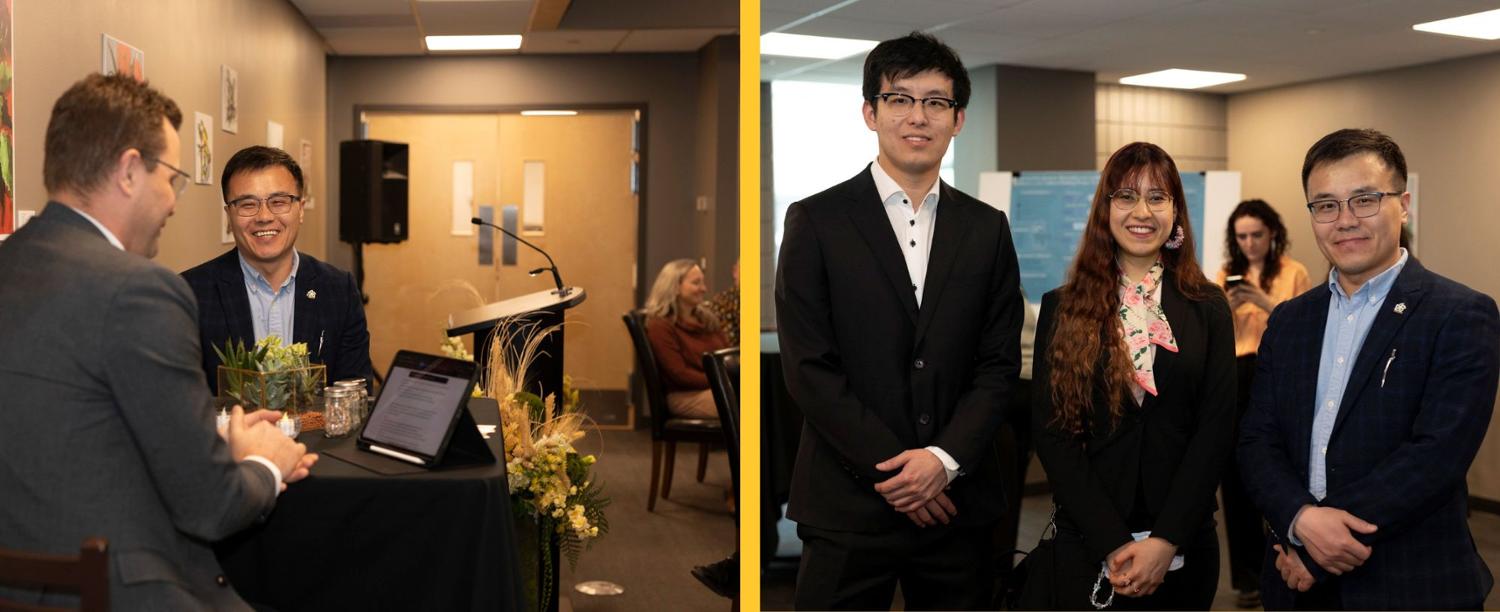
Dr. Jinkai Xue, Associate Professor in Environmental Systems Engineering, is director of the U of R’s Cold-Region Water Resource Recovery Laboratory, which recently received $118,000 from the Federal Government to engineer sustainable – and commercially viable – solutions for hazardous waste products of water treatment.
“The conventional way of thinking about water management is linear and segmented,” explained Xue. “But water does not respect boundaries. Whether we are talking about wastewater or groundwater, it all eventually becomes a drinking water problem. We need to shift our way of thinking and embrace a holistic water management framework.”
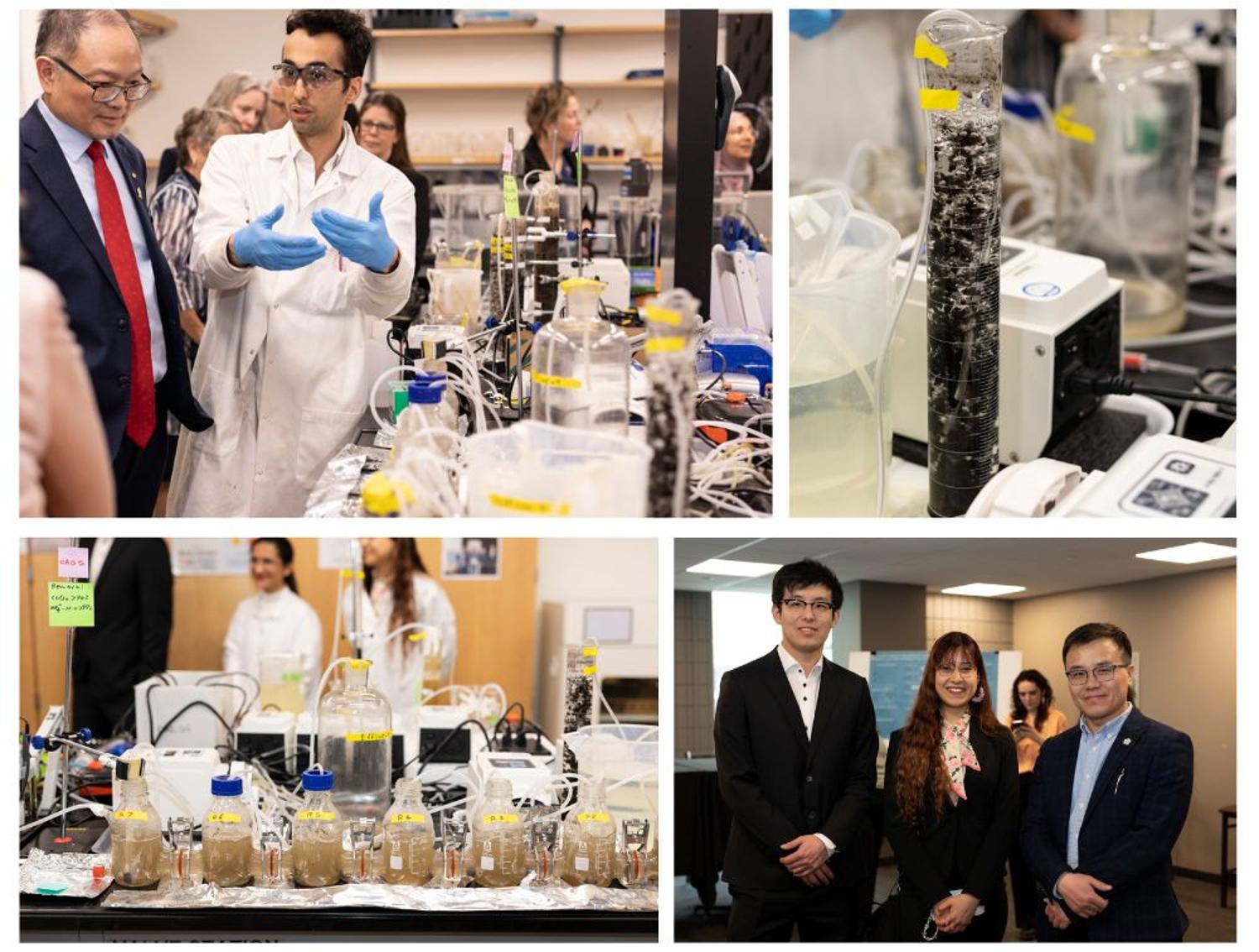
As part of the evening's program, Xue presented one of his newest innovations – ceramsite made from water treatment residual (sludge waste) – which can remove pollutants such as phosphorus from wastewater and lakes, and turn it into nutrient-rich mulch for gardeners to put in their vegetable plots or use for landscaping and in larger agricultural settings. This creates an economic opportunity from what was previously considered waste.
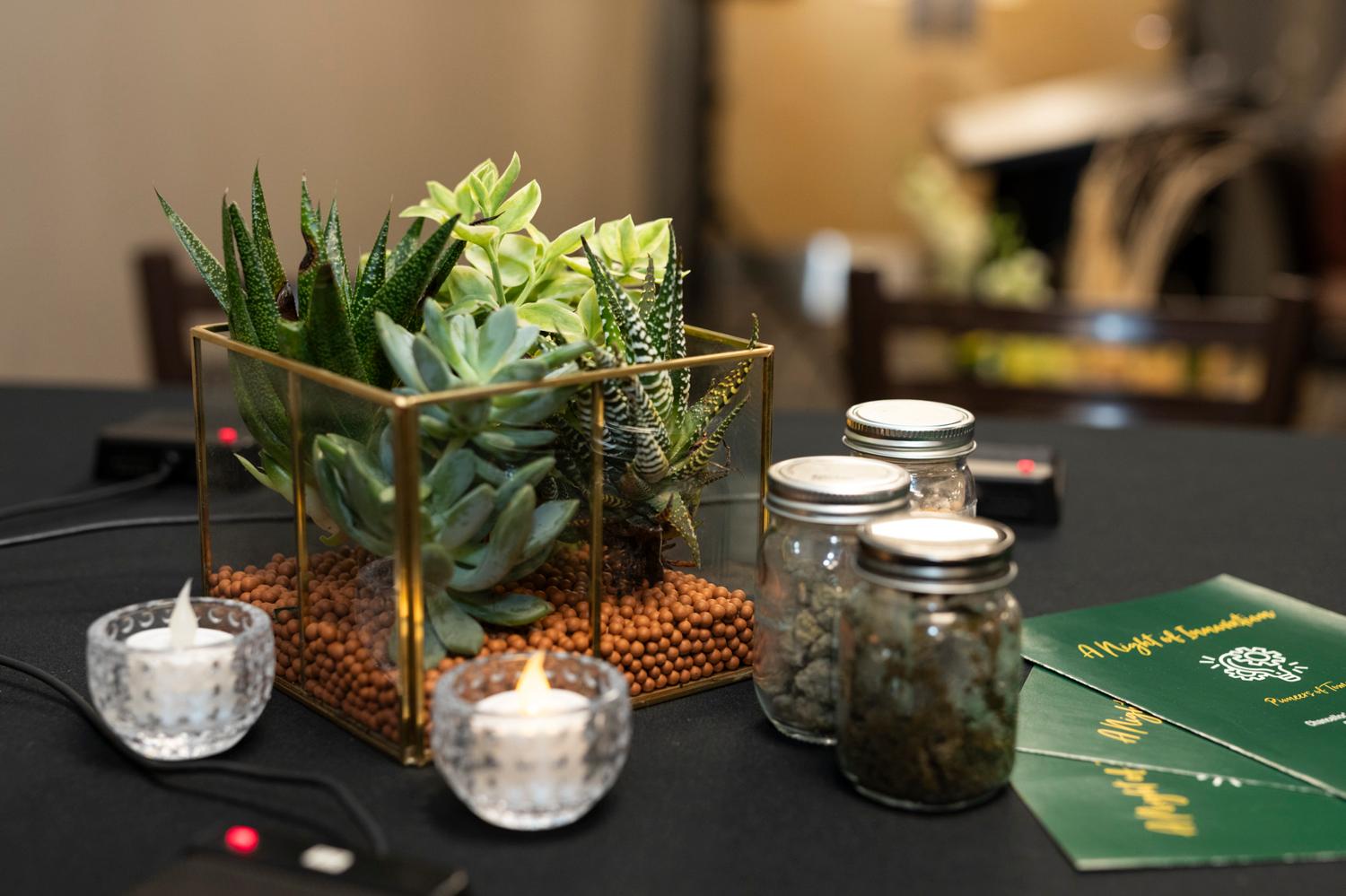
Prairie applications for geothermal energy
“The sky’s the limit for different applications of geothermal energy,” said Dr. Na Jia, Program Chair and Associate Professor in Energy and Process Systems Engineering at the U of R. She and Dr. Marziyeh Kamali, who is a researcher with the Petroleum Technology Research Centre, are working on a project with the City of Regina to research and study different scenarios to obtain optimum results for extracting geothermal energy for heating the City’s proposed new aquatic centre.
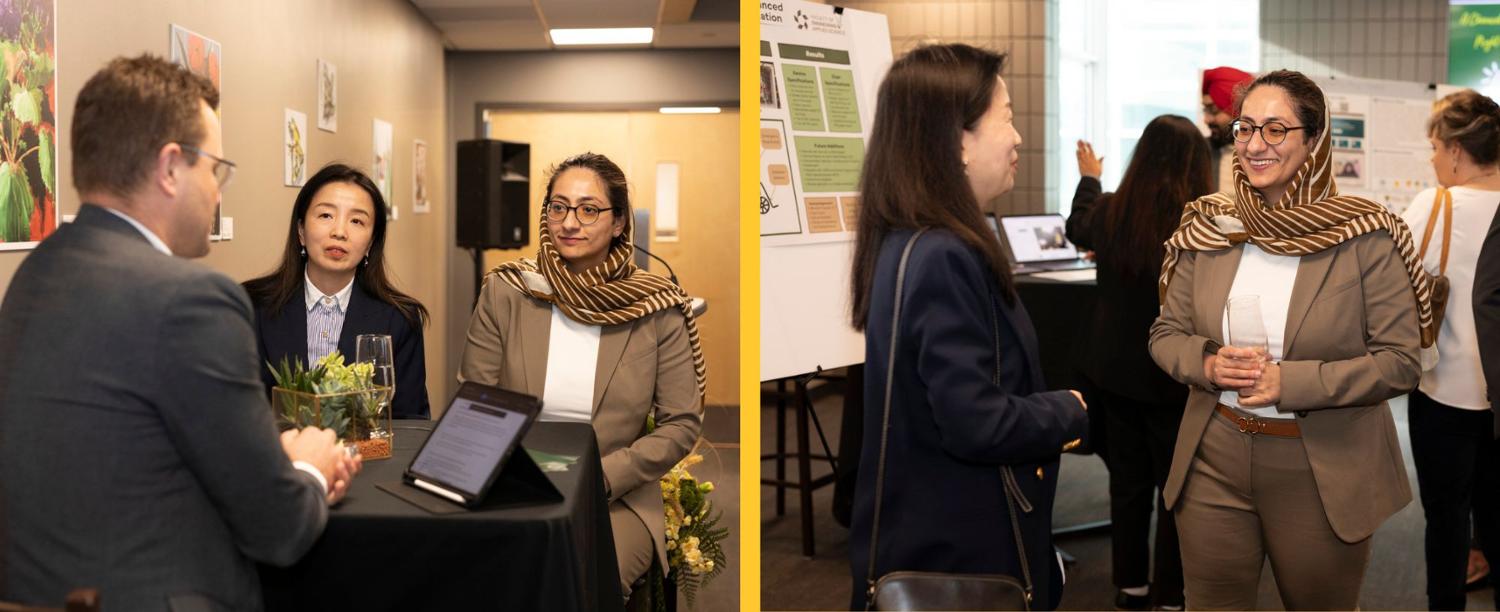
“Our project is an important, real-world, commercial-scale demonstration and use of geothermal energy that will help pave the way for future geothermal projects on the Prairies,” said Kamali.
Other beneficial uses of geothermal energy include heating sidewalks during the winter to melt snow and reduce ice, and to power greenhouses in southern Saskatchewan over winter to help with securing fresh products, so that consumers can enjoy fresh fruit and produce year-round.
Printing solutions
In the 3D Printing and Additive Manufacturing Research Lab, Dr. Mohammad Khondoker and graduate student Rawan Elsersawy described the numerous benefits of the advances they are making in developing new components for 3D printers.
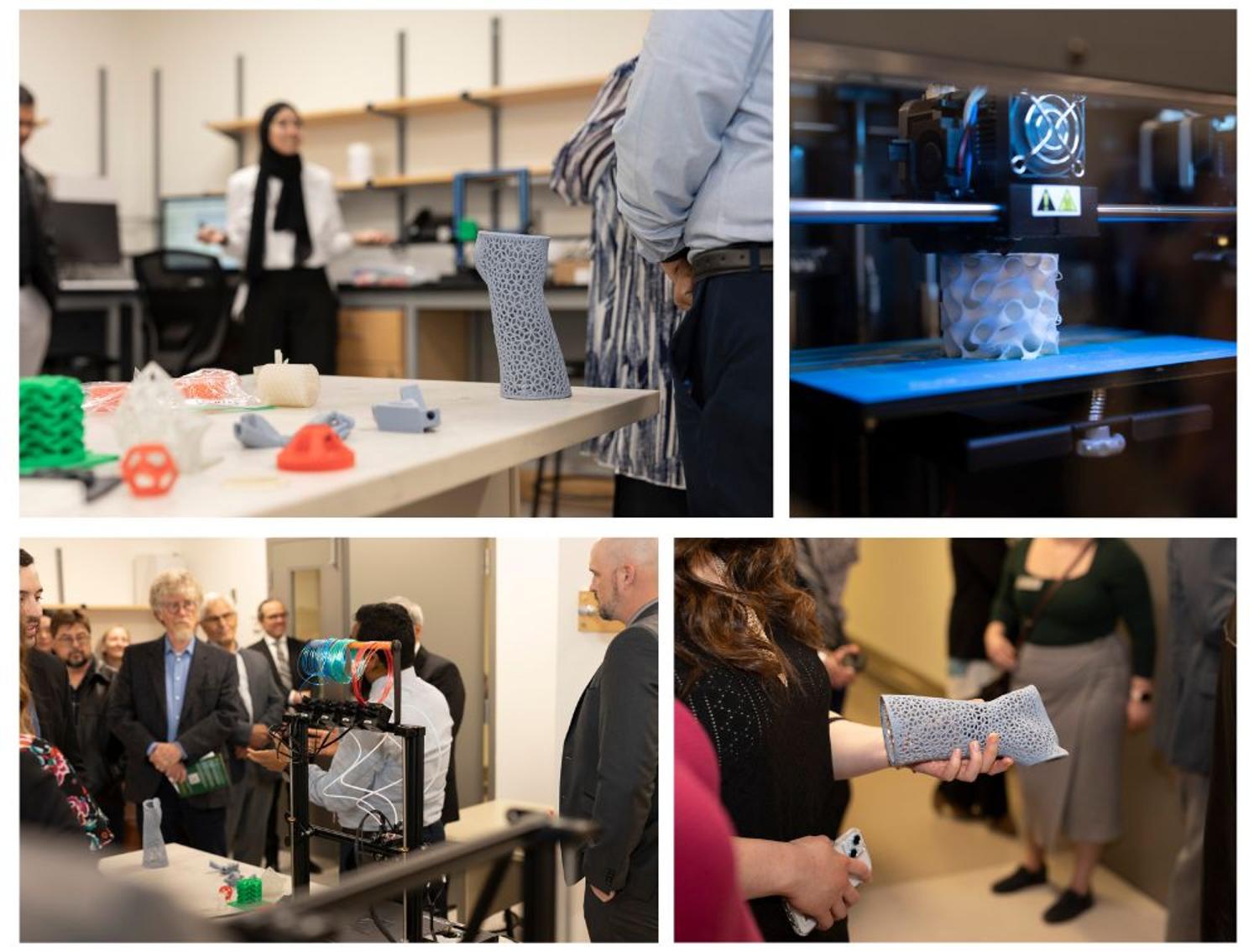
Engineering grad students at the U of R are developing new printing technologies to improve the production of highly flexible 3D printed materials made of different types of plastics and metal. Researchers showcased current work in which they are developing new flexible foam that can be used in everything from mattress pads to lining military helmets, as well as body conforming casts to help people with broken bones to heal.
Their advances will help them to innovate increasingly flexible yet resilient pieces that could be used in the production of body casts, foam for military helmets, and mattresses that conform to individual sleep needs.
Capstone projects driving innovation
U of R fourth-year Engineering students presented their final-year “capstone” projects for guests, as part of the student research showcase. Emily Schwab, Mitchell Brough, and Bailey Armstrong, who are finishing their degrees in Electronic Systems Engineering, showcased their wheelchair project. Their power wheelchair is part of a larger project to create a fully autonomous wheelchair that will improve the quality of life for a wide range of users.
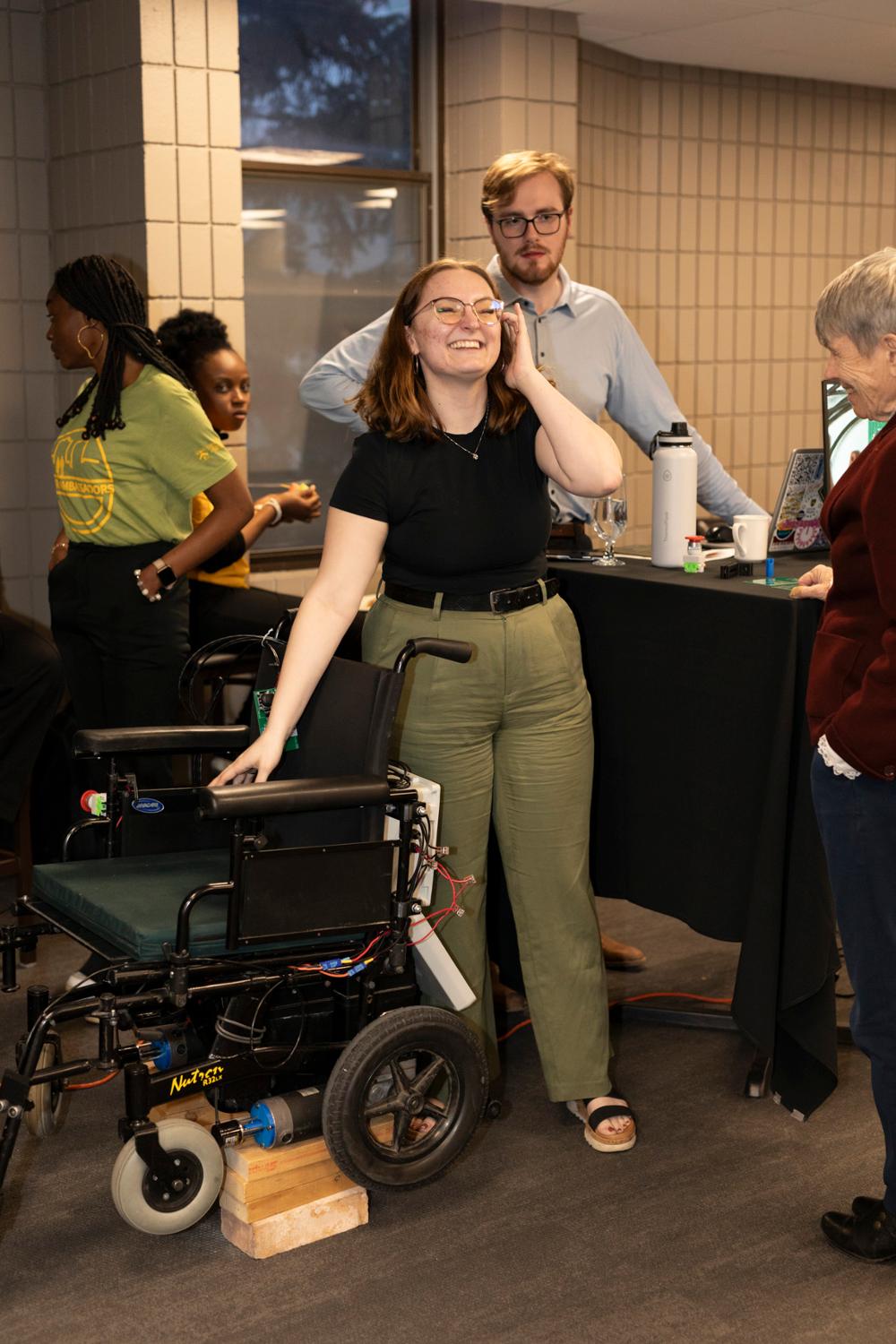
Emily Schwab, Mitchell Brough, and Bailey Armstrong showcased their wheelchair project to participants of the Chancellor's Community.
“I am so proud of what our researchers and students are able to accomplish through their research and innovation that benefit society,” said Chancellor Klein. “Our new students have a strong, welcoming community that they are joining this fall. It’s a dream come true for community members and scholars alike, and a big step forward for the University.”
All photos courtesy of Mika Abbott (2024).